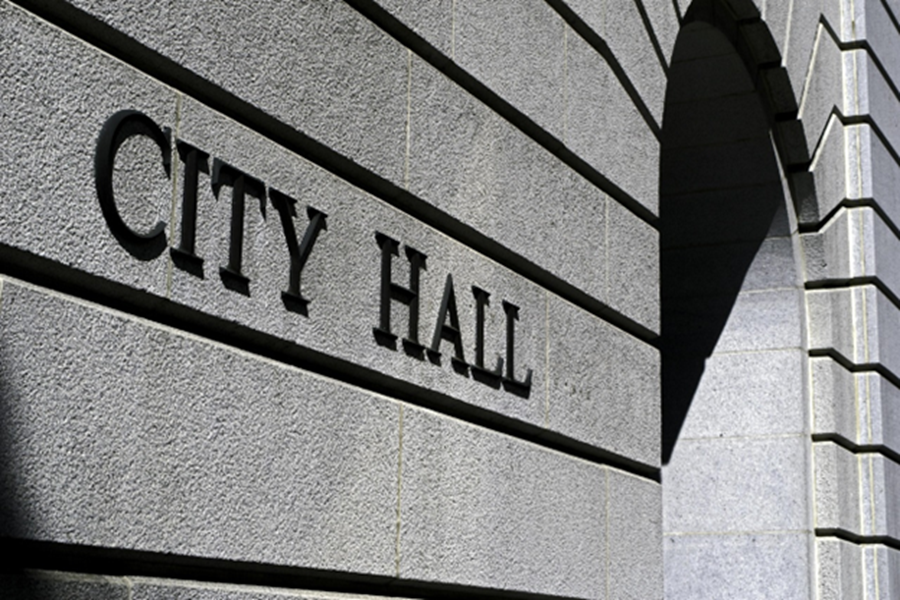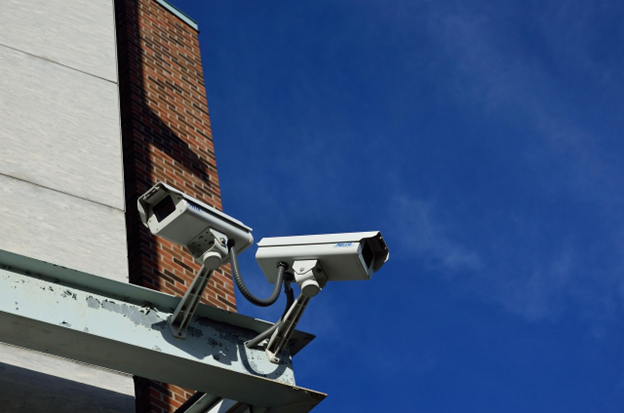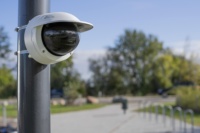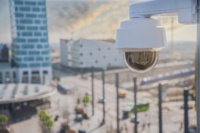Smart Security Infrastructure for Municipalities: Integration, Compliance, and Future-Proofing
September 5, 2025

- Municipalities need integrated security systems that combine access control, video surveillance, visitor management, and intrusion detection
- Compliance is critical. ADA requirements, state regulations, data protection, and liability concern all shape how public facilities manage security.
- Future-proof systems use cloud platforms, AI analytics, and scalable designs so municipalities can adapt for new threats without constant replacements.
City buildings are the heartbeat of a community. Town halls, libraries, public works facilities, and community centers are used daily. They also hold sensitive records, expensive equipment, and, in some cases, access to vital infrastructure. That combination makes them a target for vandalism, theft, and even larger security threats.
Traditional measures, locks on doors, a few cameras here and there, an alarm at the front desk, used to be enough. Not anymore. Today’s challenges demand a smarter, connected approach that strengthens protection without making public spaces feel like locked-down fortresses.
The Shift Toward Smart, Integrated Security
For decades, many municipal buildings relied on fragmented systems. A locked door here, a standalone surveillance camera there, and an alarm system that operated independently from everything else. Each worked in isolation, but when an incident occurred, the lack of communication between systems often slowed down response times.
That model is outdated. Municipalities are moving toward integrated infrastructure where video surveillance, access control, intrusion detection, and monitoring platforms operate as a single system. Instead of piecing together information from different sources, officials get a complete picture in real time.
Some municipalities oversee cameras across an entire city, town, or village. Managing multiple disconnected systems can be a constant headache – with different logins, software updates, and training needs for each. An integrated platform centralizes oversight, giving administrators one dashboard for all facilities. This not only improves response time but also reduces the cost and complexity of managing separate systems.
An integrated approach means fewer blind spots, faster decisions, and centralized oversight. When sensors and alarms are integrated, a forced door at a community center can trigger cameras to display the area, alarms to activate, and alerts to reach security staff in real time. Industry data shows this integration reduces false alarms and accelerates response while also enabling automated actions such as unlocking doors for evacuation.
Core Components of Smart Municipal Security
Smart infrastructure is not just a single tool or device; it’s a collection of systems that work together. For municipalities, the goal is to protect staff, visitors, and sensitive operations without turning public facilities into closed-off spaces. To get there, leaders need a layered approach that covers access, visibility, accountability, and after-hours protection.
Here are the building blocks that form a strong foundation for municipal security:
Access Control
Managing who can enter specific areas is one of the foundations of municipal security. Modern systems go beyond traditional locks and keys. Modern systems use card readers, mobile credentials, or fobs to control entry to sensitive spaces like record rooms, IT closets, council chambers, and evidence storage. With the right setup, permissions are role-based, ensuring staff only access the areas they need.
These systems also log activity, so administrators know who entered which door and when. Accountability helps protect sensitive areas while also creating transparency.
Video Surveillance

High-definition IP cameras have replaced grainy analog feeds. Modern cameras offer features such as wide dynamic range, infrared visibility for nighttime coverage, and even AI-driven analytics that recognize unusual behavior. Municipalities can use video tools not only to investigate incidents but also to anticipate them
For example, a license plate recognition system can flag a vehicle of interest in a courthouse parking lot, giving officials the ability to quickly identify and track it. Analytics can also send an alert if someone is lingering in a restricted area after hours or during times when the building is closed. With a video management system in place, that footage can be reviewed, tagged, and securely shared in minutes.
Visitor Management
Public buildings welcome contractors, vendors, and outside groups daily. Without proper visitor management, it’s difficult to keep track of who is in the facility at any given time. Digital systems replace paper logbooks by issuing badges, recording entry and exit times, when integrated with access control the system is capable of granting permission in the building for an allotted time.
This not only improves security but also helps during emergencies. Knowing who is inside the building allows responders to account for everyone more effectively.
Intrusion Detection and Monitoring
Intrusion systems remain a cornerstone for after-hours protection. Sensors on windows, doors, and restricted areas can trigger immediate alerts if someone attempts unauthorized entry. In an integrated system, those alerts do more than sound a siren: they bring up live video feeds, notify administrators, and can even lock down nearby doors.
Instead of waiting for someone to review a report, administrators have the information in their hands the moment something happens. That speed can be the difference between a minor incident and a major disruption.
Compliance and Regulations
Municipalities must not only protect their facilities but also operate within a framework of regulations and standards. Compliance is more than a checklist; it’s a way to reduce liability and build trust with the community.
- Accessibility: Security features must align with ADA requirements, ensuring that safety measures don’t create barriers for those with disabilities. For example, electronic doors and access systems must allow ease of use while still restricting unauthorized entry.
- Local and State Standards: Different states and municipalities set guidelines for how public facilities handle security. Staying aligned with these rules is part of maintaining transparency and accountability.
- Data Protection: Video footage, access logs, and visitor records are sensitive. Municipalities must treat this information responsibly, with clear retention policies and role-based access to prevent misuse. Legal advisors stress that municipalities should document why surveillance is used, limit how long footage is stored, and have procedures for giving individuals access to their images and handling unauthorized disclosures.
- Risk Reduction: When a municipality demonstrates that its systems meet recognized standards, it reduces the likelihood of liability in the event of an incident. This not only protects the institution but also reinforces community trust.
Future-Proofing Municipal Security
Security technology doesn’t stand still. Systems installed a decade ago often struggle to keep up with today’s demands. Futureproofing isn’t about predicting every new development but about choosing platforms that can adapt and grow.
Cloud-Based Systems
Cloud solutions allow municipalities to manage multiple facilities from one central dashboard. Updates, monitoring, and data storage can happen off-site, reducing strain on local IT departments and making remote management possible.
AI and Machine Learning
These tools go beyond simple alerts. They can identify patterns, predict possible incidents, and highlight activity that human operators might miss. Instead of reacting only after something occurs, AI-driven systems help municipalities take a more proactive approach. Global cities like New York, London, and Singapore deploy AI-driven analytics and IoT sensors to monitor public spaces, predict crime hotspots, and provide first responders with real-time data. Smaller municipalities can adopt the same tools on a right-sized scale.
Cybersecurity Integration
As physical systems become more connected, cybersecurity becomes part of the equation. Access control, video feeds, and visitor logs are all tied to networks. Because integrated systems are networked, they should include cybersecurity and privacy controls to protect against intruders and safeguarding sensitive data. Protecting these systems from cyber intrusion is just as important as protecting doors and windows.
Scalable Investments
The goal is to invest in solutions that won’t become obsolete in a few years. Modular systems, cloud integrations, and open-platform technologies allow municipalities to expand without replacing everything at once. This reduces long-term costs and avoids the frustration of “rip and replace” upgrades.
Final Thoughts
By moving from fragmented tools to integrated systems, municipalities can reduce blind spots, improve response times, and create environments where staff and the public feel secure. Meeting compliance requirements adds another layer of accountability, while future-ready investments keep systems adaptable in a rapidly changing world.
Waiting until after an incident to rethink security leaves communities vulnerable. Taking action now positions municipalities to stay ahead, protect vital operations, and serve the public with confidence.
How prepared is your community for tomorrow’s security challenges? At Digital Provisions, we help municipalities build reliable, compliant, and future-ready infrastructure. Talk to our experts today to learn more.





